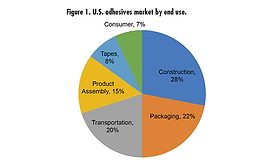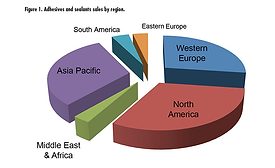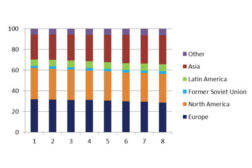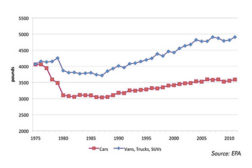Articles by A. Todd Muhleman
Strategic Solutions
Total construction spending has been growing at a robust 8.1% over the last five years.
Read More
Strategic Solutions
State of the U.S. Construction and Remodeling Markets
Both residential and commercial construction continued to recover in 2016.
November 3, 2016
Strategic Solutions
Adhesive and Sealant Market Overview and Outlook
The transportation and construction sectors led adhesives and sealants growth in 2015.
August 1, 2016
Strategic Solutions: Adhesives and Sealants Market Overview and Outlook
Improving customer spending is expected to drive demand for consumer and packaging adhesives and sealants. consumer and packaging adhesives and sealants.
August 3, 2015
Strategic Solutions: Construction, Crude Oil, and Natural Gas Outlook
Historically, adhesives and sealants have been growing about one-and-a-half times of the gross domestic product in the U.S.
March 2, 2015
Strategic Solutions: State of the U.S. Adhesives and Sealants Industry
U.S. adhesive and sealant manufacturers have benefited from an economy that has been growing quicker than other developed economic regions.
August 1, 2014
Strategic Solutions: Macro Outlook for Adhesives and Sealants
For 2013, ChemQuest expects volume to increase slightly.
July 1, 2013
Strategic Solutions: Fuel Economy Standards and the Adhesives Market
Robust demand is expected to offer opportunities for adhesives.
March 1, 2013
Keep the info flowing with our eNewsletters!
Get the latest industry updates tailored your way.
JOIN TODAY!Copyright ©2025. All Rights Reserved BNP Media.
Design, CMS, Hosting & Web Development :: ePublishing









